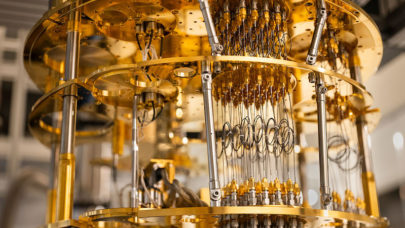With the EuroHPC program well underway, much of the European Union’s ambition to be a leader in the exascale era rests with the European Processor Initiative (EPI). The project – which has a budget of roughly €160 million – aims to develop a competitive microprocessor for exascale supercomputing, datacenters and the automotive industry. During the 2019 HPC User Forum at Argonne National Laboratory, Jean-Marc Denis (chair of the EPI’s board) took to the stage to outline the latest details on the EPI’s vision – beginning on an ominous note.

“Today, Europe is under risk of embargo.” Denis declined to talk more politics, but the implications, to him, were clear. “If there is a big economic war around the world,” he said, “Europe is not in a good position.” In particular, Denis concentrates on the automotive industry (“by far the number one vertical in Europe”), where he looks toward a future where cars are closer to “computers on wheels” – potentially threatening Europe’s vertical. “So,” he said,” Europe has to control its future in this industry.”
The strategy
“Obviously,” Denis said, “we don’t intend at first to get in Europe a manufacturing plant with the top manufacturing processes.” Such an endeavor, he explained, would cost in the tens of billions [of Euros] – far more than the European Commission would spend at this stage in the process – and would take a long time to yield the desired results and revenue.
The goal, then? Develop the necessary IP.
Developing their own IP for microprocessors for exascale edges, Denis elaborated, would not be feasible. Instead, the EPI set out to recreate expertise in Europe based on Arm IP from a Japanese company. The EPI is also exploring the creation of its own IP based on RISC-V.
“The way we develop is quite simple with EPI: codesign,” Denis said. “Codesign is the key word for everything – hardware, software, security.” Without security, he said, there could be no sovereignty in their computing industry – and furthermore, the security dovetailed nicely into the EU’s goal of maintaining its citizens’ data privacy, especially through GDPR.
All of this is done with an eye on key drivers – HPC, automotive, servers, cloud, AI and big data chief among them. But the EPI is also exploring support for “safety critical” objectives for industry robotics and space applications.
Making it real
“The big question after that, once we have developed the IP,” Denis said, “is how to transform the IP that we develop for microprocessors into real products that we can have in a supercomputer.”
For this – at least at first – the EPI is turning to SIPEARL, a France-based partner company that will take the IP that is being developed under EPI, add some specific IP of its own, develop a product line, manufacture microprocessors and accelerators and sell them to any company that wants to do business in Europe.

First, the EPI will produce its “RHEA” family of general purpose processors, slated for 2021. These will be accompanied by compatible prototype motherboards in limited quantities (a PCIe board and a BullxSequana board). Then, the EPI will produce the “ZEUS” core at 6nm in 2021-2022. Starting in 2022, the ZEUS core will be updated to 5nm and the EPI will launch the industrial version of its accelerator, “TITAN.” Late in 2022, according to the plan, the EU’s exascale computer will launch, along with an edge version of the microprocessor for autonomous vehicles, which will use “CHRONOS” (an update of the general purpose processor) and TITAN.
Building an ecosystem
“Something that we also intend to develop a lot is the concept of ‘common platform,’” Denis said. “Let’s say you have a few cores with Arm, you have a chiplet with HBM, and then you can have a specific chiplet coming from any company.” He explains that for companies that can’t spend tens – or hundreds – of millions on their own manufacturing, this might not be feasible – but through the EPI, it could be. “With our common platform, they could plug their own IP on our chiplet and they would get access to the best technology, with direct access as well to HBM, to DDR and so forth.”

Denis sees this as a win-win: the EPI builds its ecosystem and startups have a place where they can turn manufacturing dreams into reality. This is just one element of the EPI’s plan to build a robust ecosystem around its hardware – another, of course, being software.
“We just have to follow the European tradition” on software, Denis said – a combination of building on existing projects (mostly European) and industry partnerships. In essence, the EPI is aiming to complement the existing software to supply a full HPC production stack.
“The big challenge for the next 12 months will be to deliver,” Denis said matter-of-factly. After all, he said – the EU won’t use the EPI processor for its supercomputer if the processor is bad.





























































